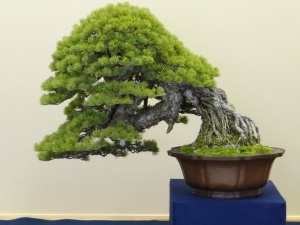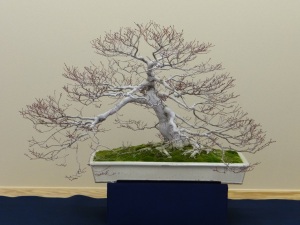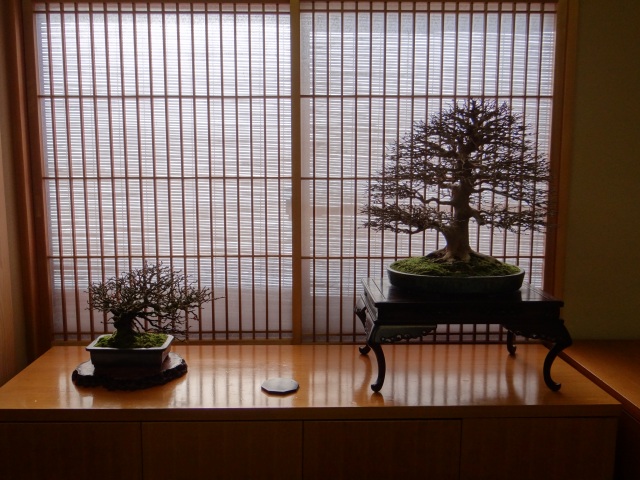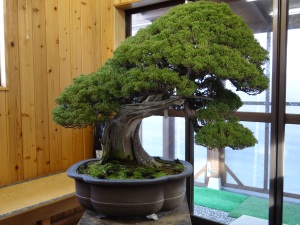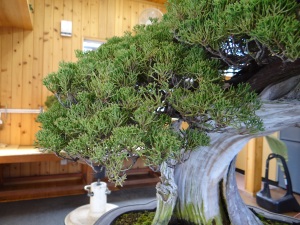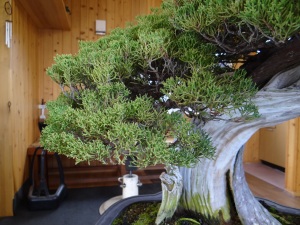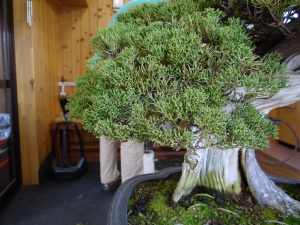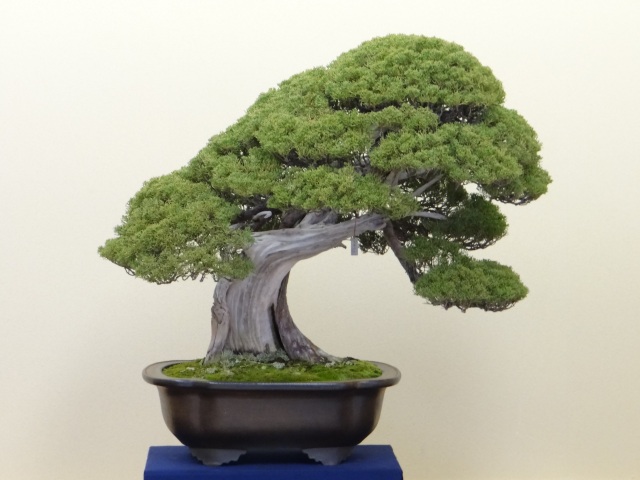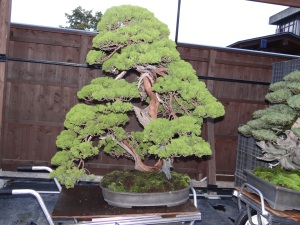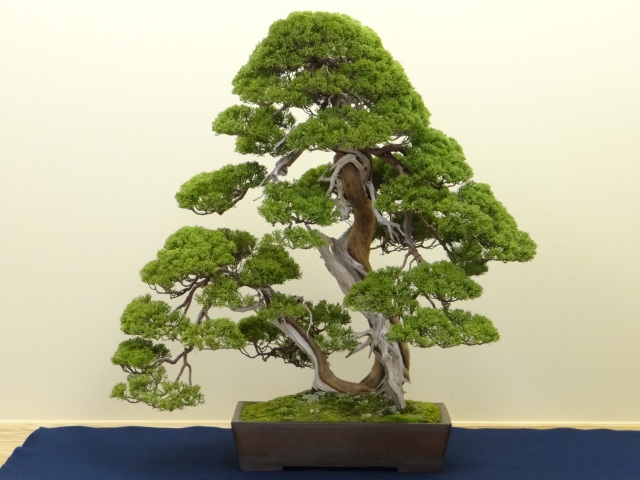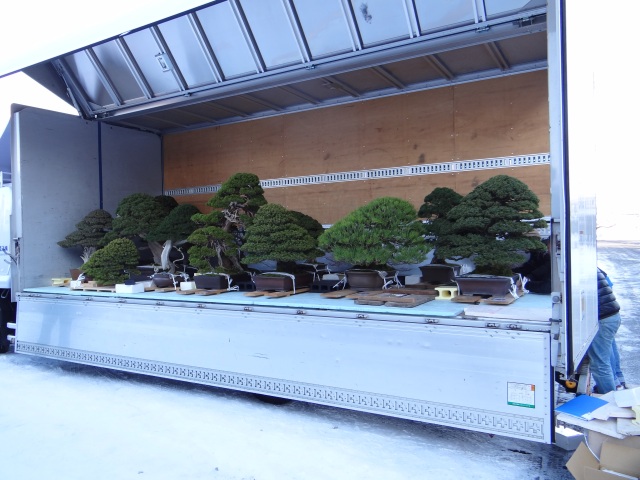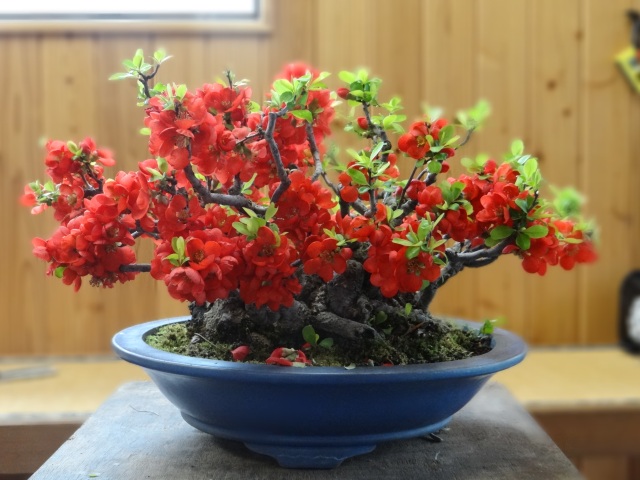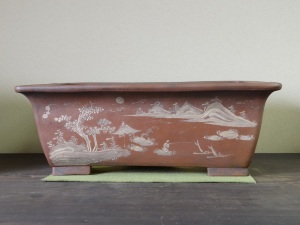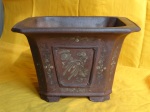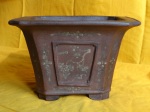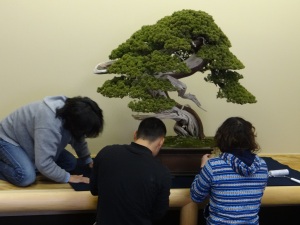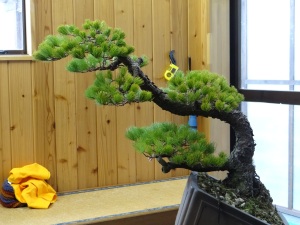This year’s Kokufu exhibition will be a little tougher for every hopeful as there are about 50 less trees being accepted. Many of you have been curious to why this is. Well it is because the building in which the show is typically held, the Tokyo Metropolitan Art Museum, has been renovated over the last few years. I believe they have added an escalator and a few other improvements to update the building. I know for sure that the last two years it was held in a typical business/residential building on something like the 16 floor. You would arrive on that floor and there the trees were. This year it is back at its normal location and it will the first time for me. So, the display area for the Kokufu trees will be smaller and less trees will fit. For that reason they have cut about 50 spaces/entries. Also for some reason I have not been able to figure out why, there will be a larger number of Kichou bonsai, important bonsai masterpieces in this years show. From our garden alone we will have 7 submissions that are Kichou trees. So for these reasons, the judging this year will be harder than in the past. I expect this years show to have some of the top trees in Japan. So that means that me and my fellow apprentices must bring our A-game to each tree. Well without further ado, here are the trees from our garden!
This next juniper was worked on first by my sempai Yusuke. Prior to it being repotted, the tree was tilting more to the left. So Yusuke basically did an about job, then the tree was repotted. Afterwards Oyakata gave it to the top apprentice, Matt, to get it perfect. I believe he spent an afternoon wiring some of the fine branching and checking the balance. It turned out really well! Great job Matt!
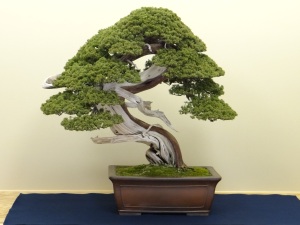
This tree is owned by Doug Paul of the Kennett Collection. This entry is the 4th consecutive entry for him. It is uncommon for foreigners to enter trees into the show, but I’d love to see it become a more common practice in the future. Sweet tree Doug-san!
Next is a black pine I prepared along with Oyakata. Overall, not a lot of work was done to it. First we pulled most of the long needles that were sticking out of profile and any needles that were browning in color or broken. Then we checked the overall balance. We wired a few branches here and there to make weak areas look stronger and to make the foliage pads full and in line. One area he stressed getting just right was the top right side of the apex. He wanted to make sure that it was compact and not sticking up too much. This whole process only took about an hour, but it was just the right amount of work to get the tree looking crisp and clean, yet still natural looking.
For this next display I was running in and out of the tea room moving one tree out and another in and didn’t get to snap a great picture. The main tree is a trident maple in a Tofukuji pot. The accompanying tree is a choujubi in a Kinyo (blue glazed) pot. The Kinyo pot is a favorite of Oyakata’s and has been used in at least the last two or three Kokufu exhibitions with various trees.
Then a few days later, Oyakata made a slight adjustment to the display. He decided he didn’t want to use the Kinyo pot after all. I not too sure why this is, but we put it in a different pot.
These next trees are designated Kichou bonsai, Important Bonsai Masterpieces.
Next is a Kichou tree I had a lot of fun preparing. This was the second to last tree I worked on before I went home on my Christmas vacation. Here it is before any work…
My goal for this tree was to get it looking ‘so fresh and so clean’ yet keep it looking natural and untouched. A difficult task! The way I do this is by first checking the balance. By this I mean: Are all the pads in the correct place? Do any pads need to be pulled up/pulled down? Are there any areas of the pads that are sticking out of profile? Do any areas look weak and need to be made stronger looking? Are any areas too strong/overgrown? and so on. For the most part all the pads were in the correct location. Basically I needed to wire some of the finer branching to make the pads appear dome-like, where all the foliage fits in a fluid group. A little difficult to explain so here are a few pictures that show this process.
So after doing a similar process over the entire tree, this is what I turned out…what do you think?
Sakafu/Kokufu Shimpaku Juniper: This last tree is a special on for me. It is owned by a client and has been in the garden ever since I began my apprenticeship. Last spring Oyakata was already preparing for the next Sakufu-ten which wasn’t for another 8 months or so. This past Sakufu was the first year in which non-professionals displayed trees for the show and we as apprentices here at the garden were going to submit trees. Oyakata had told me early on which tree he wanted me to work on. But as time passed and he got more excited for the show and wanted the best of the best to be entered, he changed his mind…about 5 time. He ended up giving my tree to the newest apprentice and asked we what I wanted to enter. At first I wasn’t sure and told him that it was his call. But the more I thought about it, the more this tree kept coming to mind. So one morning as we were cleaning, I asked him if I could work on this tree for Sakafu. He gave it a long pause, then decided that it was great choice. This tree is actually owned by a client, so he got on the phone right away to ask if it was ok. The client of course had no problems and was happy that his tree would be used in the show. So a few days later I got the tree in the workshop and prepped it using all the skills I had learned up to this point.

It was well past dark when I had finished this tree. I may look happy, but inside I know I’m saying, ‘snap the picture and let’s go home’…though I was very proud to say the least!
And here is how the tree looked in mid-January vying for a spot in the 87th Kokufu exhibition.
Everyone who participates in the Sakafu show receives a hand written certificate. Here I am with mine. I will have to put it in a nice frame and hang it in my tea room one day! Awesome!
Well, hope you enjoyed the bonsai. I will keep you posted and let you know the results of the judging. Keeping my fingers crossed they will all make it!
***I just found out today that all of our entries were accepted! Congratulations to all our clients, Oyakata, my fellow apprentices and I’ll give myself a big pat on the back!***
Thanks for visiting! Please fell free to tell me what you think in the comment section and if you’d like please become a follower of the blog by clicking on the follow link!

